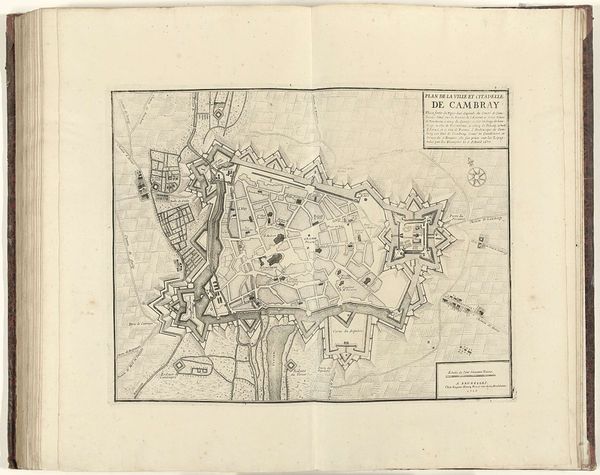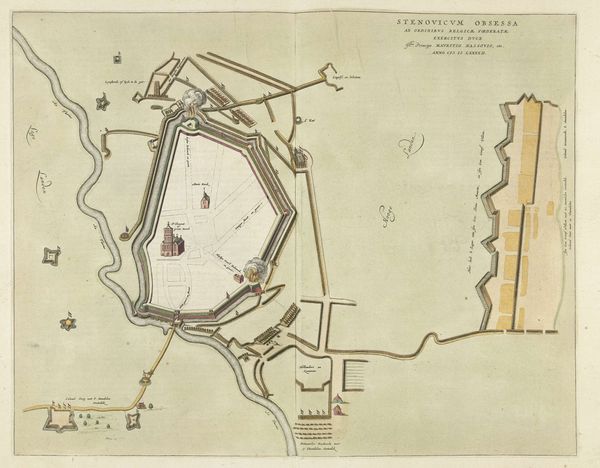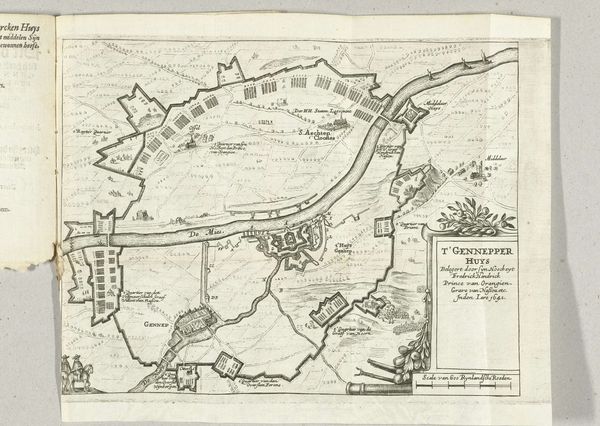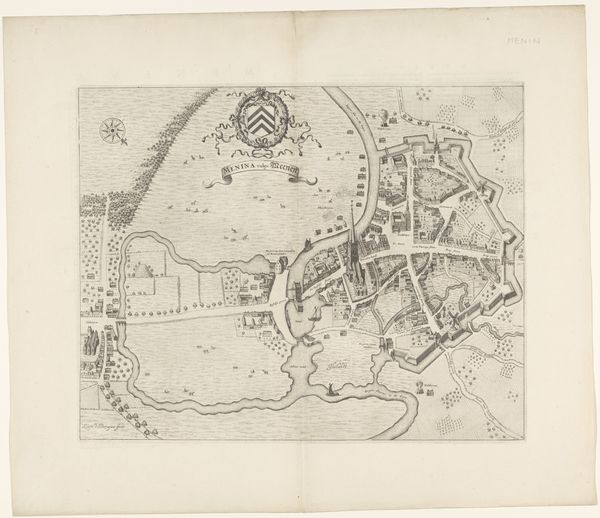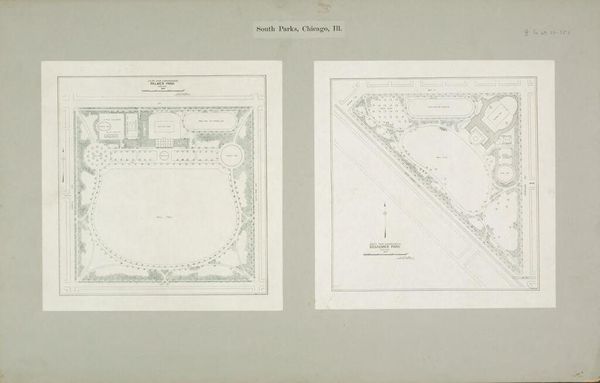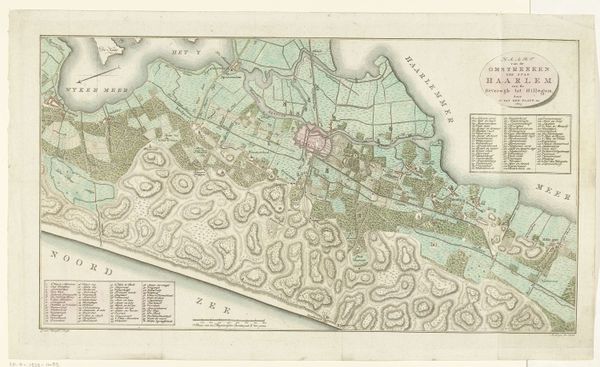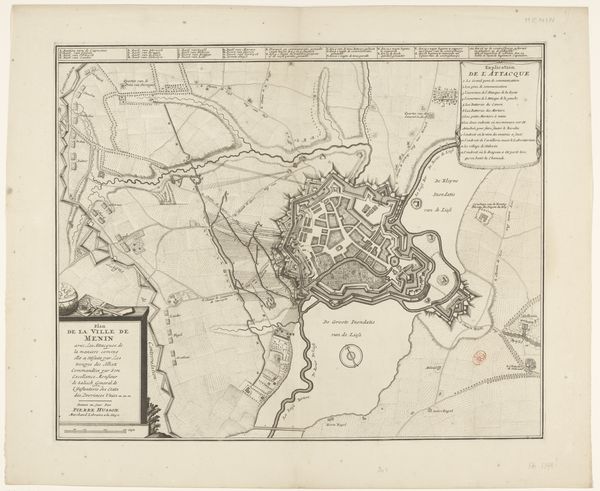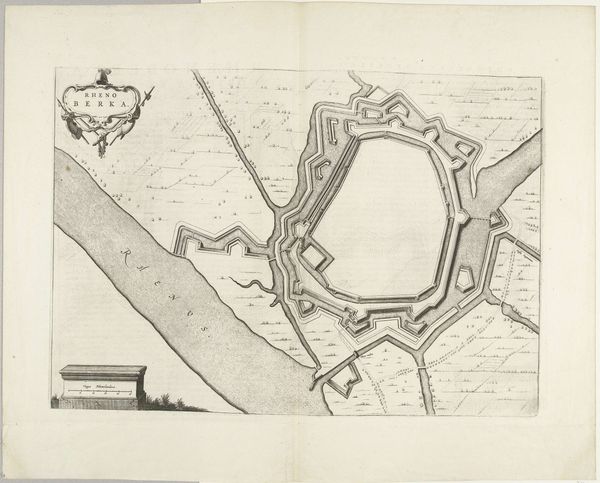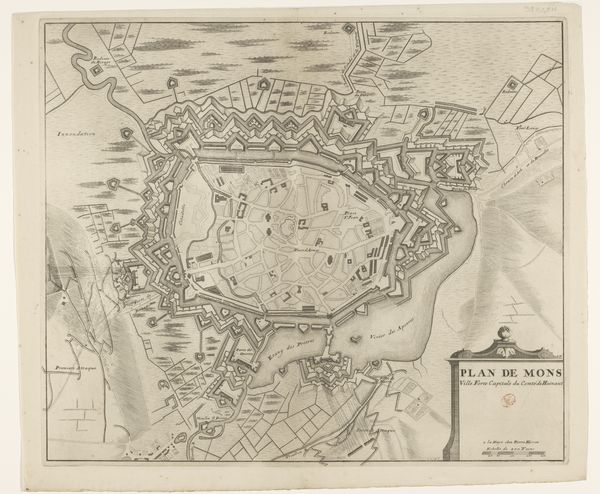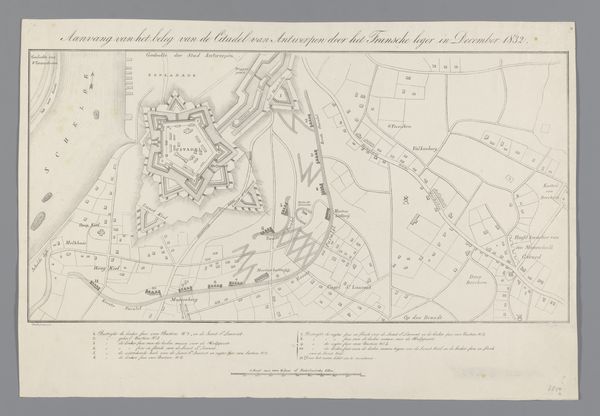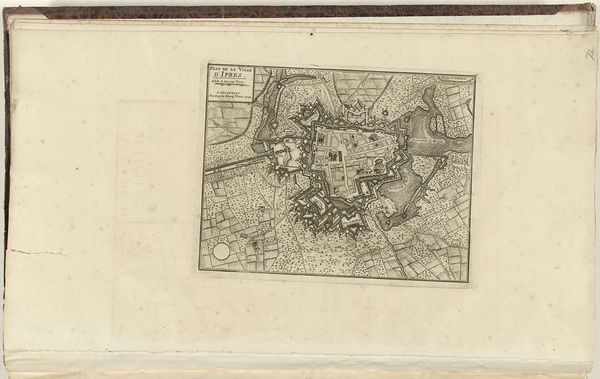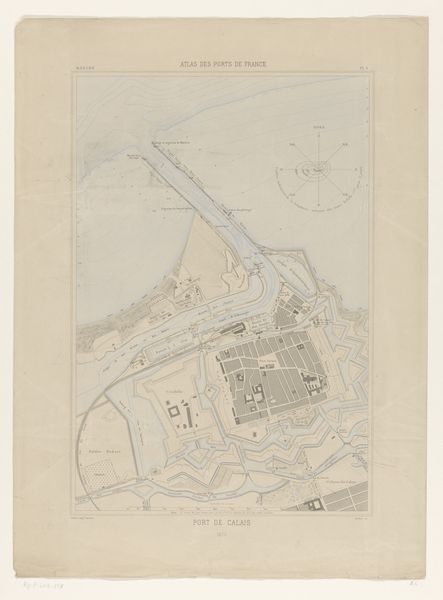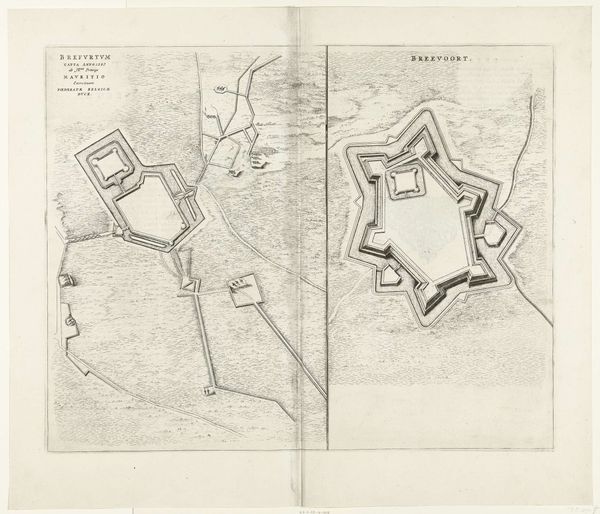
Belegering van Batavia door de koning van Java, 1628 1857 - 1859
0:00
0:00
drawing, print, ink, engraving
#
drawing
# print
#
ink
#
cityscape
#
history-painting
#
engraving
Dimensions: height 548 mm, width 718 mm
Copyright: Rijks Museum: Open Domain
Curator: Here we have, "Belegering van Batavia door de koning van Java, 1628," a piece whose creation is attributed to the Koninklijke Nederlandse Steendrukkerij van C.W. Mieling, dating back to between 1857 and 1859. What's grabbing you about it? Editor: A calculated and clinical aerial view – all lines and land, ink and intent. Not what one would call an “energetic” piece, but certainly communicative in its own right. Almost architectural, don’t you think? Curator: Absolutely. Look closely, and you begin to see the incredible detail, and begin to feel as if you’re not looking at lines on a page so much as peering from the sky upon this important conflict. These lines representing the clash between cultures! The tension is understated, but very present, I believe. Editor: Yes, I see it. You can trace the contours of power – the fortifications, the harbor, those imposing ships just off the coastline. It really drills into you the Dutch colonial machine's footprint, the whole apparatus rendered so matter-of-factly, right down to where they are positioning the city relative to the trees! One forgets there’s more to landscape art than scenery sometimes. Curator: Precisely! The map's function transcends simple cartography; it acts as a historical record and also subtly reveals the mindset and ambitions of its makers. We begin to confront some quite unsettling ideas, once the picture fills out. A city in siege. Editor: Makes one think of labor too. The drawing is an engraving, but the labor of armies outside the walls? Labor of Dutch planners at desks ordering things to a desired end? All part of the overall fabric here… Curator: So true. A blend of aesthetic craftsmanship and the crude mechanisms of war, perhaps. Its power isn't in visual drama, but in quietly revealing the complex layers of power and human ambition embedded in the landscape. Editor: I like how this has played out, bringing it home this way to how something not explicitly anti-colonial nevertheless leaves a metallic taste behind. A reminder perhaps to trust our eyes less, not more. Curator: An intriguing sentiment with which to leave our listeners... Food for thought about perspective and those buried intentions shaping so much of what we see and think we know.
Comments
No comments
Be the first to comment and join the conversation on the ultimate creative platform.
